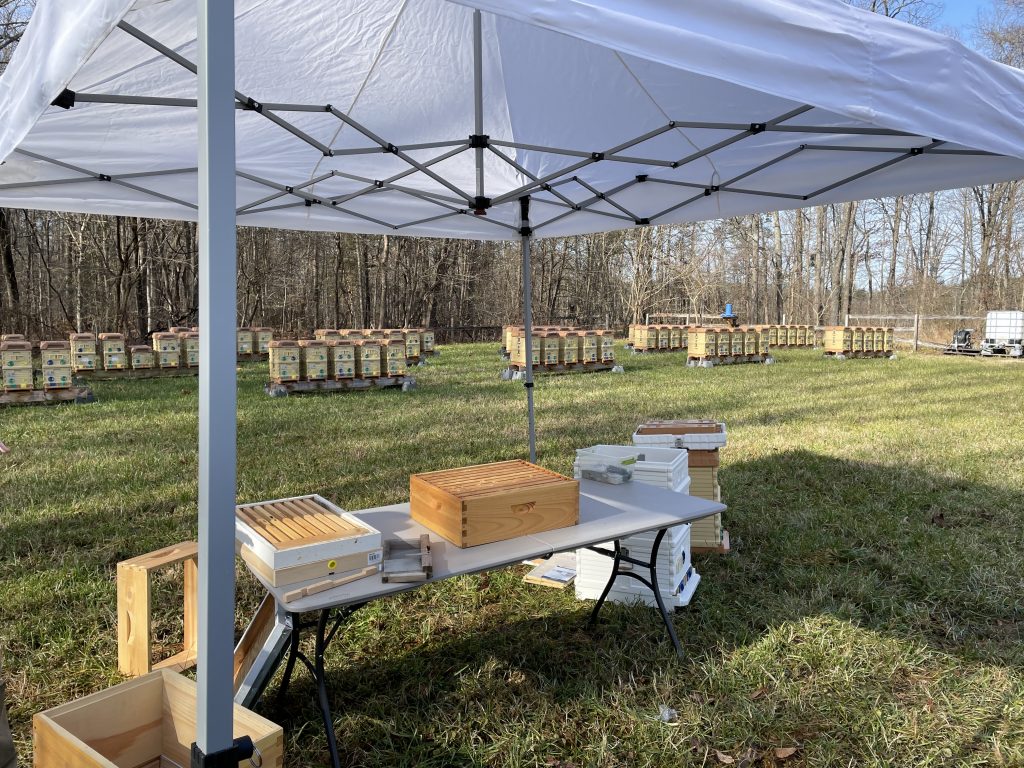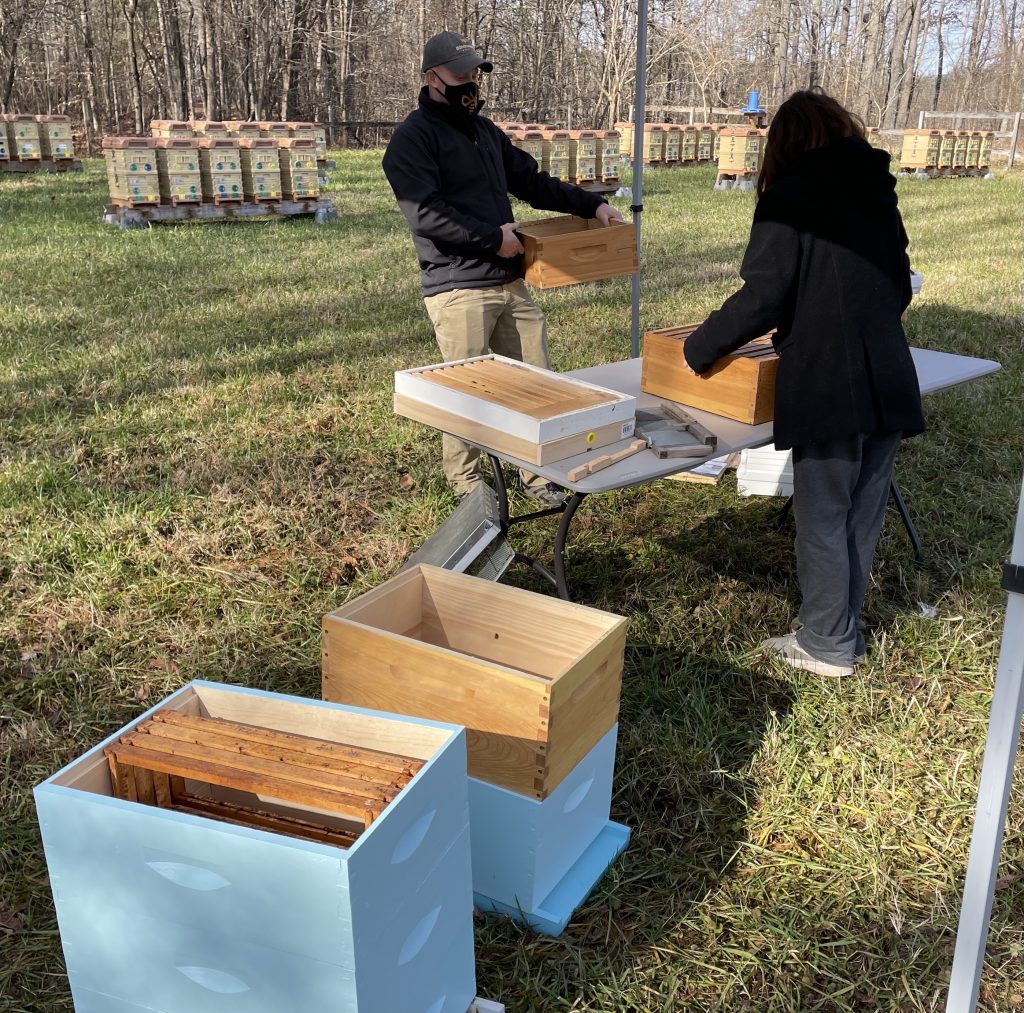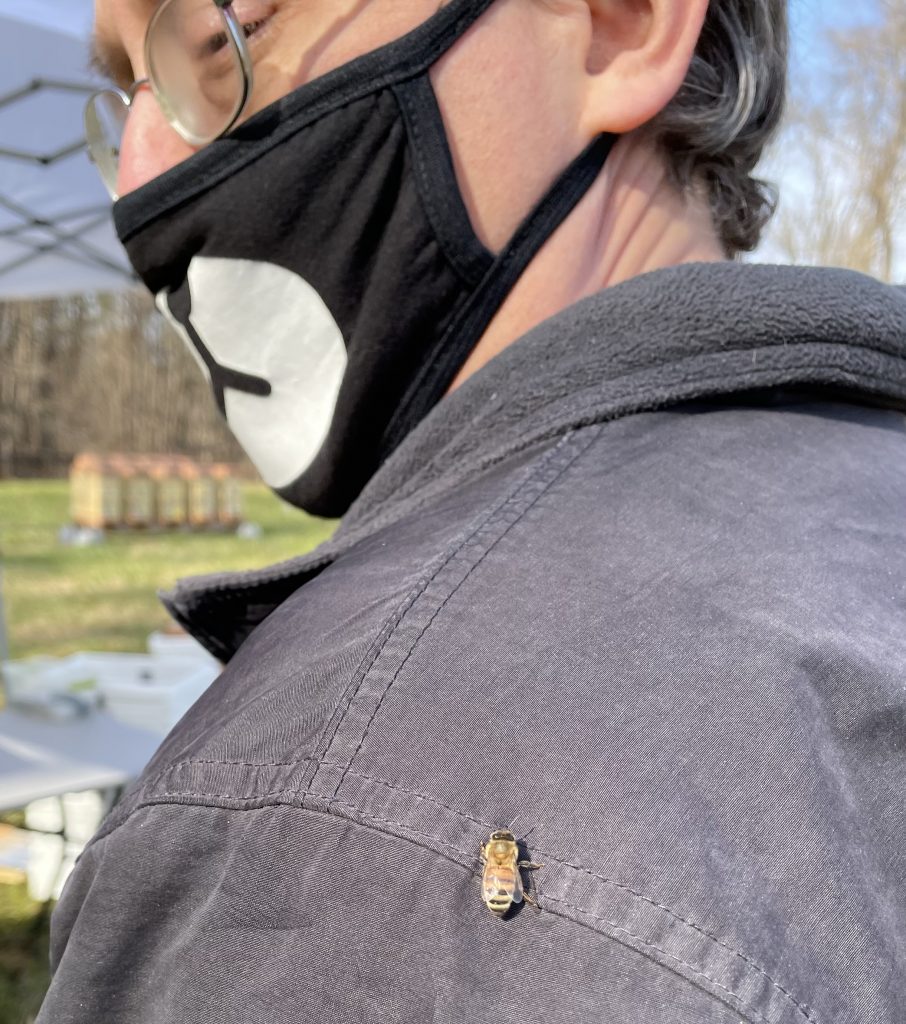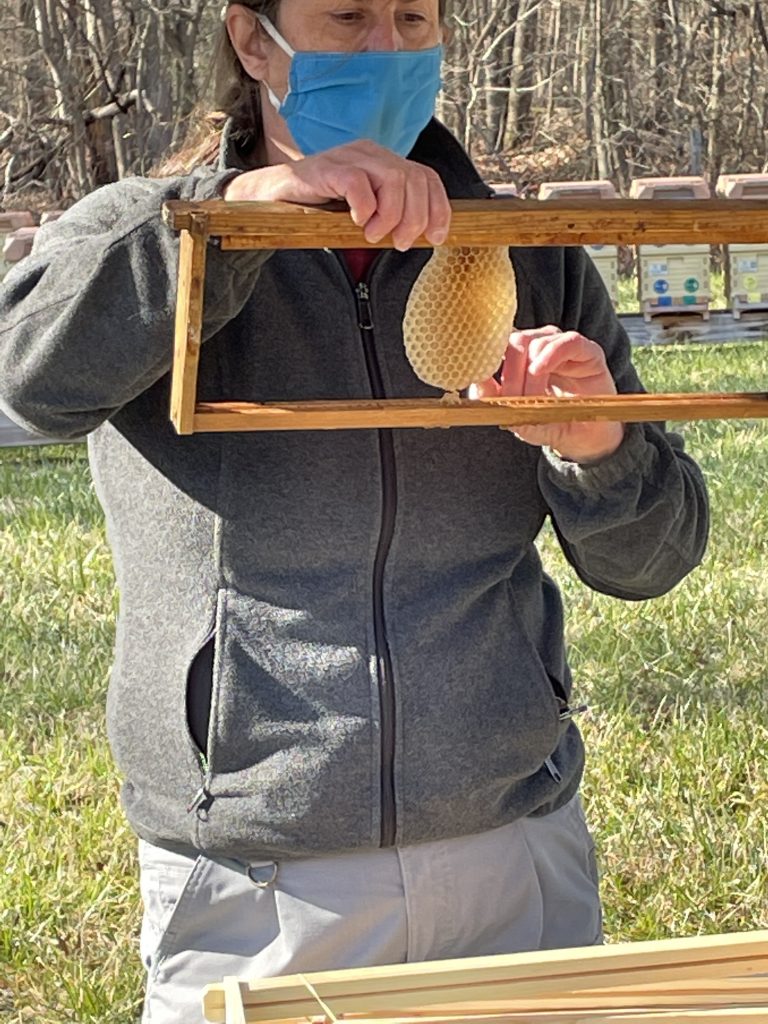from Deborah Hewitt, MSBA Director
The Anne Arundel Beekeepers Association (AABA) has had to adjust to COVID times and go online for meetings and our Short Course – except for an optional equipment lab and the final field day in spring when students will meet the bees.
Purchasing equipment is a major investment, and we thought students should have the ability to see, touch - and even lift - before they buy.

AABA's new president, Ryan Smith, offered to host the Short Course Equipment Lab at his apiary, HoneySmith Bees, since our normal apiary at Arlington Echo wasn't open to us. We were fortunate to have one of the mild winter Saturdays, and even a few bees were flying in to explore. There were three tents well-spaced in the field with ~100 nuc colonies providing a backdrop.
The first tent had Langstroth hive components in traditional wood and the Apimaye insulated plastic hive. Students could compare 8-frame versus 10-frame, medium versus deep boxes, and solid versus screen bottom boards. Dennis Roundy brought in a super of honey for students to heft.
The second tent had protective gear for students to see veils, jackets and suits in both regular and ventilated styles as well as gloves, smokers, and hive tools, and even a varroa easy check. There were frame and foundation options, and a brood box with combs of various stages of completion and ages to compare - even the start of a foundationless frame.

The last tent housed different feeder systems for comparing the pros and cons of each. There were also wooden and cardboard nuc boxes and package boxes to show how the bees would arrive or for keeping nucs in the apiary. We included queen excluders and escape boards as extra equipment to consider for season two.

Just beyond the tents we had other hive options with a Long Langstroth Hive that was provided by Kim Mehalick and a Layens Hive built by AABA member Dan Sawyer. There was also a Warre hive and a "too small" top bar hive displayed to make students aware of comb dimensions so bees can build a proper brood nest with overhead winter stores (and avoid the swarm factor).

We divided the day into three sessions with an hour and a half between each and had between 12 and 16 students arriving each for each session where they divided again to small groups at each station and then rotated. Time slots were decided by a zoom poll during the first meeting and students divided fairly evenly.
Thanks to the Chiappelli family for the photos and they gave permission to share them!
